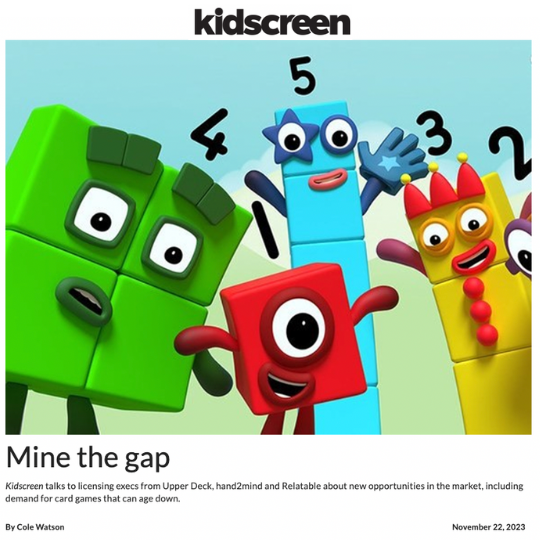How To Build Relationships With Journalists
Written by Rylie Miller
Published December 7, 2023
Building relationships is like planting a garden. Once you plant the seeds, you have to put in the time to nurture them and be patient for them to grow. If you don’t do it right, you won’t get results.
The same thing goes for building media relationships….you have to put in the work for coverage and opportunities to flow. Much like the seeds in your garden, you can’t expect anything to bloom overnight.
Recently things have gotten a little rocky in the managing media relations department. According to Muck Rack’s State of PR 2023 Report, 53% of PR pros said that their top challenge is getting a journalist to reply to them. And on the flip side, journalists are reporting that their relationships are getting worse.
As PR pros, it’s part of our job to make their jobs easier. PR pros need to put TLC into their media relationships to become credible resources.
I’ve compiled a list of important do’s and don’t when it comes to building relationships with journalists – with insight from the Carve Media Relations team.
The Do’s and Don’ts of Effective Media Relations
Do Make Yourself a Resource
The ultimate way to build relationships with journalists is to become their go-to resource. And this can happen in many different ways.
Everyone knows someone; lend a helping hand: “Can you put them in contact with someone, even if they aren't your spokesperson? If they want to talk to a company that is no longer a client, can you take the time to connect with them? If you have a personal interest in a story they are working on, can you provide insights? If you help a journalist out and they know you have no skin in the game, they will appreciate it,” Associate VP of Media Relations Matt Burkey said.
Give reporters their next story, by reminding them you’re there: Instead of waiting for a reporter to come to you, or to see a HARO or Qwoted inquiry, regularly touch base with reporters you have relationships with to see what they’re working on and if you could help.
Senior Director of Consumer Accounts Nicole Brief had fostered strong relationships with two journalists at Kidscreen – an international trade publication serving the needs and interests of kids' entertainment professionals. Nicole continued to build the media relationship by asking what he was working on and if she could be of assistance – dropping the names of brands she works with that could be of interest, along with a unique idea for a story.
This hooked the reporter’s interest, leading to a licensing roundtable feature with executives from Upper Deck, hand2mind, and Relatable (formerly What Do You Meme?) on creating great licensed products for kids of all ages.
Not only did Nicole score three of our clients in one piece, but was able to serve as a valuable resource to her – what we at Carve call – “friendly” reporters.
Not every interaction you have with a journalist needs to be a pitch. It could be as simple as a “What’s on your plate right now?” or “I found this tip and thought of you!”
Pro Tip: As always, stay connected with reporters on LinkedIn, X, their newsletters, and wherever else they may be. This way you are up to date on details that can help with personalizing pitches or topics that may need commentary for. You’ll also know if they’re out of the office for a bit celebrating a marriage, on maternity/paternity leave (so you know not to pitch them), or changing their beat.
Don’t Ask Reporters for Questions Before an Interview
One of our favorite B2B tech reporters, Martine Paris, recently dropped this PSA on LinkedIn:
I grabbed my popcorn to dive right into the comments section and see the chatter. I found a heated debate. But, it ultimately boils down to this: it’s the job of the PR pro to prepare their spokesperson, not the journalists.
When you pitch something, whether that’s an announcement, an executive for a speaking engagement, or a new product, you’re already setting the scene for what the narrative will be.
It’s only fair to assume here that the questions will be related to well…what you initially pitched.
If you want to assert your executive as a genuine expert in the industry, asking for the questions in advance may raise a reporter’s red flag. After all, if you’re positioning them as a subject matter expert then there’s no reason for them not to be ready for anything that comes their way.
“Ultimately, there is no one-size-fits-all solution to this question. Some reporters will never share specific questions, some have no problem with it,” Matt Burkey said, “Once a topic is shared and accepted, it is up to the client to be able to speak to that topic but I believe it's acceptable to ask the reporter if they plan to cover topics outside of what is pitched.”
Properly train your spokesperson to be ready to speak to anything and everything that comes their way so they don’t choke. (Remember Ted Lasso’s first press conference? Yeah…spitting on reporters is the least effective way to build media relationships.)
Once the topic is confirmed, put on your critical thinking cap to inform the media brief for your spokesperson. Take a look at what the journalist's other articles look like. This way your spokesperson can understand where they’re coming from and make the most out of the interview, and you can build a relationship with journalists by having a spokesperson who gives them great material.
Pro Tip: Logistical questions are the a-OK ones to ask before an interview: What will the format of the interview be (live or recorded, written, etc.)? How long will the interview last (to ensure your spokesperson can give your full attention and not rush to the next call)? This shows that you are respectful of the reporter's time and deadline.
⭐ We hosted a LinkedIn Live session featuring a conversation between Carvers Mariela Azcuy and Matt Burkey, one of our resident pitching experts. Watch the recorded session to learn how to navigate the intricacies of the industry today as they discuss the five truths of modern media relations. ⭐
Pitch Reporters the Way They Want To Be Pitched
Journalists likely win the prize for the “Most Unread Emails in Inbox” award. They’re bombarded with hundreds of pitches a week (or sometimes a day).
And they typically assume PR pros are relying on the “spray and pray” method, throwing everything they can at the wall and seeing what will stick.
The last thing you want is to end up on a target reporter's “blocked” list or as the subject of their “what not to do” social post. When it comes to building media relationships, the number one thing you need to do is set yourself up for success by putting yourself in the mindset of the reporter. Ask yourself: “How can I make their job easier?”
Assume they aren’t going to read your pitch and give them everything they need in a digestible way. Make it easy for them. Keep the pitch short and personalized, and incorporate bullet points showing them exactly what they need to know upfront and that you can help them tell a valuable story.
Do your research. What is their beat? What’s trending in the industry right now? Have they covered the angle you’re pitching before? Who is their target audience?
Bold or highlight the most eye-grabbing details. Incorporate juicy data to grab their attention. According to Cison, 68% of journalists rely on the public relations professionals they partner with to provide some form of research, such as trends and market data.
(Journalists are literally telling us how and what they want to be pitched across their social platforms – take these hints and RUN with them.) 👇
The last thing journalists want is to be sent a topic that they have nothing to do with. Down the line, if you have news that the reporter would actually cover, they may pass it by simply because the last time you sent them information it had nothing to do with their beat.
Add value to your follow-up if you don’t hear anything back. Account Supervisor Gabby Wright came across a reporter who covered what a will is and why people need one; she knew pitching our client in the estate settlement space would be a good match.
But her initial outreach didn’t get a response. When Aretha Franklin passed and news spread that her family was disputing over her estate, Gabby followed up by layering in the timely topic which ended up landing an interview with the company’s CEO in Fortune. “Stay on top of what’s trending in the news because newsjacking is the perfect way to connect with new journalists you may not necessarily pitch regularly,” Gabby said.
Pro Tip: Ever wondered what happens behind the scenes before securing that major PR hit? Don’t worry – we’ve got you covered. Our LinkedIn Series “How I Got That Hit” will show you just how to build relationships with journalists, straight from our PR pros.
Don’t Jump to Conclusions When Asking for a Correction
The last thing you want to come across when seeing coverage go live is something that shouldn’t be there.
But before you jump to conclusions and start sending a strongly worded email telling the reporter they messed up, take a step back and evaluate the situation at hand.
“First, if the coverage is positive and you helped secure it, what should come before any correction request is a thank you for the story. Reporters aren't in the business of making errors, so it probably wasn't done maliciously,” Matt Burkey said.
Next, evaluate the mistake at hand. Is it the reporter’s opinion? Did you not like the tone of the piece or the fact they didn’t use everything you gave them? If so, you shouldn’t ask for anything to be changed. This could crumble your media relationship.
If it’s a factual error, like an incorrect product offering or data point, a misspelling of a name, or an inaccurate title… something truly necessary to the accuracy of the piece, approach the situation lightly and politely.
Demanding changes that aren’t necessary is not how you build relationships with journalists, it’s how you lose them. Reporters are running a million miles an hour, with deadlines left and right, drafting different stories simultaneously.
“Provide them with as much information as you can to eliminate back and forth to make the correction happen as soon as possible,” Senior Manager of Creator and Media Relations Erika Cassidy said.
Don’t Assume Coverage Is Guaranteed
Repeat after me: An interview or a reporter positively responding to your pitch doesn’t guarantee coverage (or else it would be advertising!)
Sometimes things are out of our control – layoffs, reporters getting new gigs, or something major happening in the world that is more important than your product launch or thought leadership piece.
Once an interview concludes or a sample is shipped, don’t continuously reach out to reporters to see when/if they will publish your piece. Chances are they’ll get frustrated with you and want to cover you even less. “Asking when a piece will go live may come off as transactional or impolite, so if you do ask, be cautious of the wording and timing,” said Erika Cassidy.
If they confirmed they’re going to publish your story, but didn’t give you an exact go-live date, kindly reach out to see how their experience is going. “Instead of asking when a piece will go live, ask them if they need more commentary, another source, data, trends – anything that can help them with this story or something else they have in the pipeline,” Senior Manager of Media Relations Marely Arias said.
Sure, you can get antsy waiting for media coverage. When pitching our smart lock client, Lockly, as a prize on the Price is Right, Account Supervisor of Advocate and Creator Services Aixa Bellido de Luna waited six months before the product aired.
But in the end, it’s all worth it. You build a media relationship that you can keep in your back pocket. (And a mainstream hit to flex!)
How To Build Media Relationships the Right Way
At the end of the day, we’re all humans and we all have jobs we need to get done. The sooner you start positively building media relationships, the sooner your coverage will bloom.




